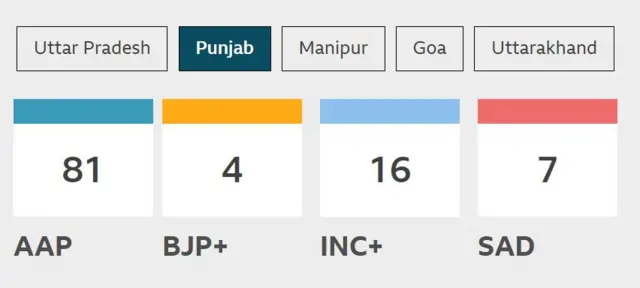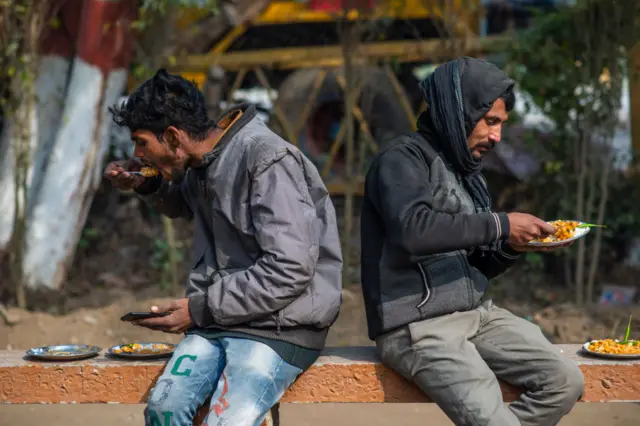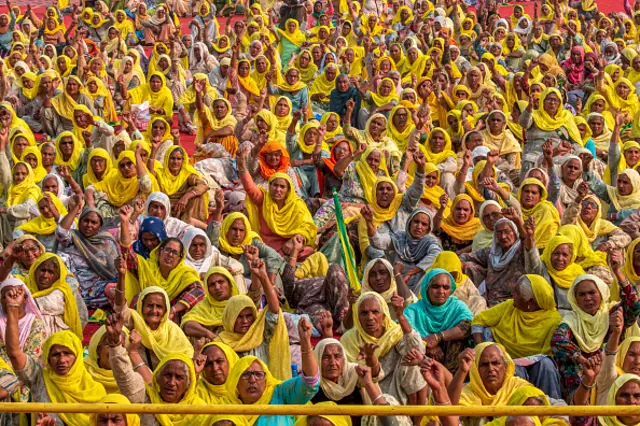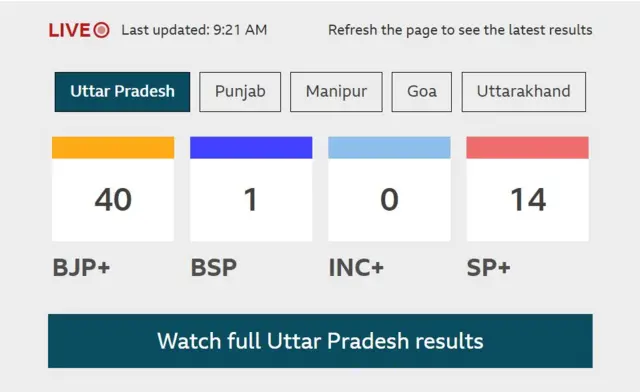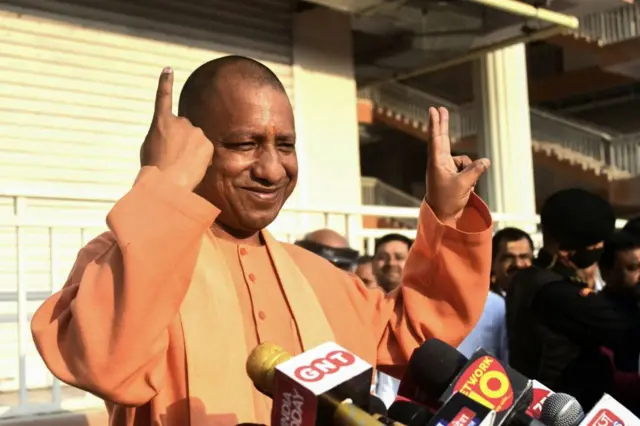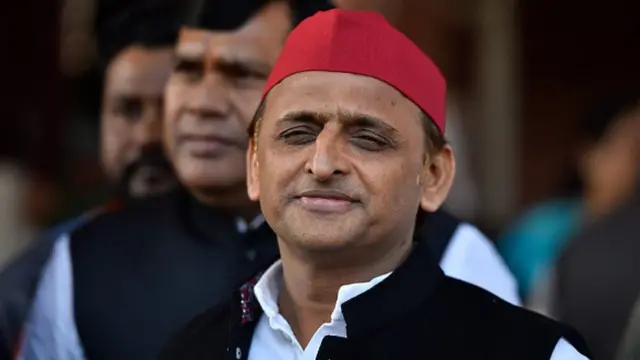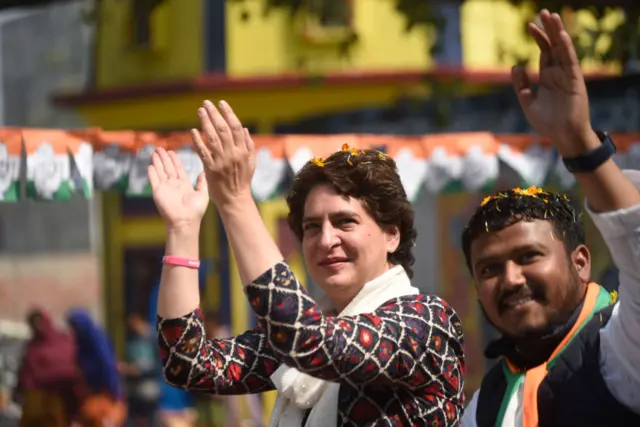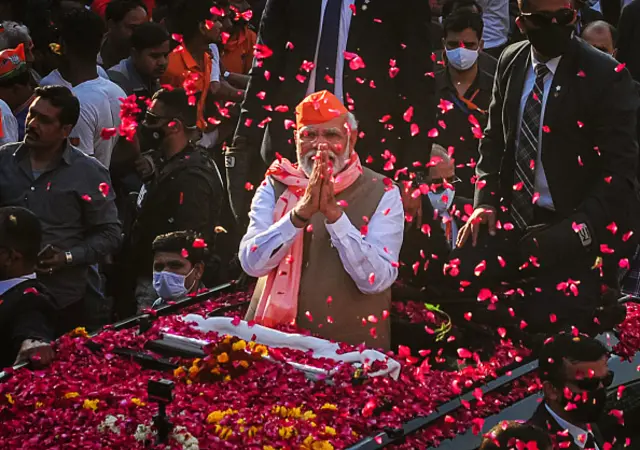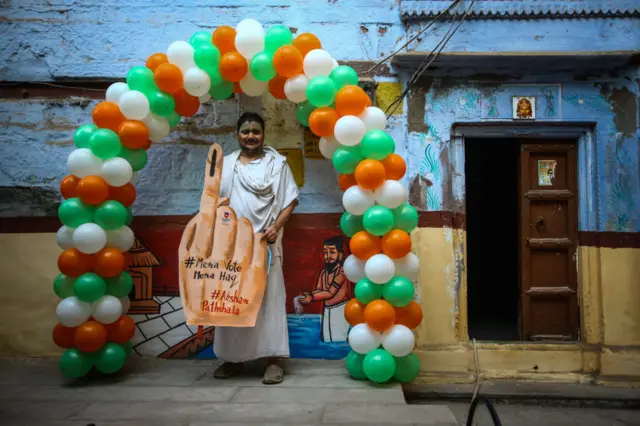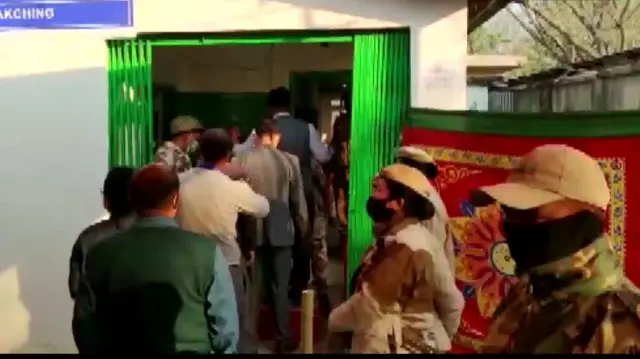Early trends show AAP ahead in Punjabpublished at 04:29 GMT 10 March 2022
Early trends show that the Aam Aadmi Party (AAP) is leading in 81 seats.
Led by Delhi chief minister Arvind Kejriwal, the party was formed in 2013 and has won two consecutive terms to govern the national capital. Its popularity is bolstered by the its hard stance on corruption and its focus on healthcare and education.
In Punjab, Mr Kejriwal seems to be banking on this track record as he projects himself and his candidates as crusaders of change, urging voters to “give one chance” to the party.
Click hereto follow results from all five states.
